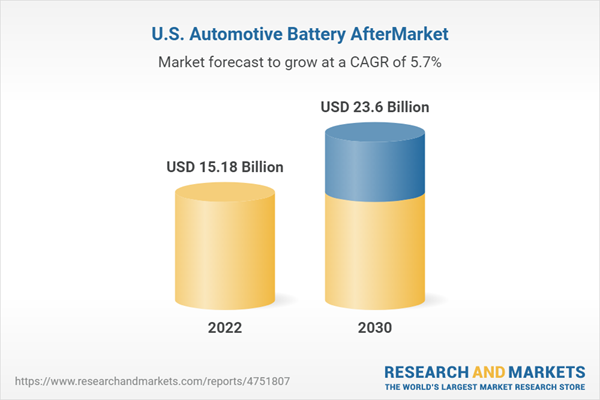A notable rise in availability of charging outlets and financial incentives for manufacturing Hybrid electric vehicles (HEVs) has emerged as a crucial factor for the growth of the electric vehicle market in the recent past. Lower running cost of electric vehicles compared to that of conventional Internal Combustion Engine (ICE)-operated vehicles is also expected to bolster market growth. Various government regulatory agencies have implemented policies that support increased usage of electric vehicles globally. In addition, environmental issues, such as increasing levels of pollution, energy depletion, global warming, and biological hazards, are leading to a substantial shift in consumer preferences from conventional vehicles to electric vehicles.
Leading manufacturers of electric vehicles are also increasingly incorporating eco-friendly materials in their production mechanisms. Ford, for instance, has started using bio-based and recycled materials to manufacture external structures of its electric vehicles. Nissan, on the other hand, is using a different approach to being environment-friendly when it comes to its electric vehicles. The company extensively uses old car parts, water bottles, and plastic bags to manufacture interior and exterior parts of these vehicles.
The automotive aftermarket is witnessing a dynamic phase change in customary automotive component sales and delivery paradigms with the convergence of digitalization and auto repair and maintenance service delivery techniques. Several start-ups have surfaced in the industry, delivering custom-made components at economical rates. For instance, CarParts.com and US Auto Parts Network, Inc. are leading global auto spare parts suppliers for maintaining vehicles. These start-ups also suggest an estimate for the right price to be paid for an auto component along with recommendations for customizations.
Similarly, ‘Auto Parts Warehouse’ allows users to compare and get components at economical rates with ease and delivers instant quotes for battery replacement and maintenance. This convergence enables component suppliers to provide pickup and drop services even from remote locations in cases of repair and replacements. Digitalization has, thereby, enabled transparency in auto repair and maintenance service delivery. Digitalization in automotive component suppliers has enabled OEMs to deliver directly to the customer’s home or office from across the globe, at the click of a button.
However, fluctuating raw material prices are hampering the growth of the U.S. automotive battery aftermarket. Lead oxide, sulfuric acid, and polypropylene are key raw materials used to manufacture batteries. Polypropylene, which is used to make cases for batteries, is derived from carbon compound and petroleum. Crude oil and natural gas derivatives are the primary feedstock used to produce polypropylene. Therefore, fluctuation in prices of crude oil and natural gas plays a key role in structuring the cost dynamics of plastics used for battery manufacturing.
Crude oil witnessed tremendous fluctuation in prices over the past few years owing to the large supply-demand gap. As a result, several nations implemented policies in order to stock up on crude oil resources to maintain constant internal supply. Volatility in prices of crude oil also has a direct impact on the manufacturing cost of its downstream derivatives.
Key manufacturers and distributors are continuously expanding their service reach by resorting to geographical expansion and mergers and acquisition across U.S. states. In April 2017, for instance, A123 Systems, LLC announced plans to construct a new headquarter in Michigan. This strategy is likely to help the company in amplifying its presence in U.S. over the near future. In June 2014, the company acquired intellectual property-related assets of Leyden Energy, based in California, U.S., and China. This strategic acquisition is projected to benefit the company in gaining access to the latter’s lithium-ion technology and battery materials, thus widening the former’s technological expertise.
In U.S., most automotive aftermarket batteries are manufactured by three leading companies, namely East Penn Manufacturing Company, Exide Industries Ltd., and Johnson Controls. These companies offer batteries under various brand names, which manufactures batteries according to desired specification of retailers, so the specifications of their products may vary. Johnson Controls, which supplies batteries to more than half market, announced in November 2018 that it has agreed to sell its power solutions business, which involves automotive battery business, to Brookfield Business Partners L.P. The transaction was valued at nearly USD 13.2 billion.
U.S. Automotive Battery Aftermarket Report Highlights
- Rising investments and initiatives aimed at developing Hybrid Electric Vehicles (HEV) are expected to propel market growth. For instance, the U.S. American Recovery and Reinvestment Act grants funds to private and government entities to develop HEVs
- The retail/brick segment accounted for the largest revenue share of 57.7% in 2022.
- The passenger vehicles segment captured the largest revenue share of over 56.5% in 2022. The growing number of passenger vehicles on the road is leading to a higher demand for automotive batteries, as these vehicles require periodic battery replacements due to wear and tear.
Table of Contents
Companies Profiled
- A123 Systems, LLC
- East Penn Manufacturing Company
- EnerSys
- Aptiv
- Exide Technologies
- Johnson Controls
- NEC Corporation
- Samsung SDI Co., Ltd
- Tesla
- Interstate Batteries
Table Information
| Report Attribute | Details |
|---|---|
| No. of Pages | 200 |
| Published | November 2023 |
| Forecast Period | 2022 - 2030 |
| Estimated Market Value ( USD | $ 15.18 Billion |
| Forecasted Market Value ( USD | $ 23.6 Billion |
| Compound Annual Growth Rate | 5.7% |
| Regions Covered | United States |
| No. of Companies Mentioned | 10 |









